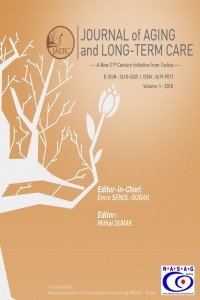
Journal of Aging and Long-Term Care
Yazarlar: Susan E. SLAUGHTER, Carla ICKERT, C. Allyson JONES, Jeffrey A. BAKAL
Konular:Beşeri Bilimler, Ortak Disiplinler
DOI:10.5505/jaltc.2018.52724
Anahtar Kelimeler:Sit-To-Stand Activity,Mobility Outcomes,Dementia,Long-Term Care,Continuing Care,Health Care Aides,Care Staff
Özet: The demand for continuing care facilities to support older adults in Canada is expected to increase. Currently, access to rehabilitation and recreation services is limited among this group of older adults. Identifying simple mobility interventions implemented by usual care staff may be a cost-effective way to maintain or improve mobility among older adults in continuing care. This study evaluated the effectiveness of mobility activity, the sit-to-stand activity, on mobility outcomes of long-term care and supportive living residents with and without dementia. Fifteen supportive living facilities and 8 long-term care facilities participated. Eligible residents were: aged ≥ 65 years, medically stable and able to stand up from a chair. Facility healthcare aide staff received training on the sit-to-stand activity by study educators and were asked to complete the activity with participating residents four times daily. Staff documented completion of the activity on flow sheets. Two mobility outcomes, time to complete first sit-to-stand and number of sit-to-stand repetitions completed in 30-seconds, were measured by research assistants at the beginning and end of the trial for all participants. Demographic information, including age, sex, and dementia diagnosis, was gathered from health records. Data were analyzed using receiver operating characteristic curves and logistic regression. Across all 296 residents, mean time to complete the first sit-to-stand at baseline was 5.58 seconds (SD = 4.20) and the final mean time was 4.63 (SD = 3.71) seconds (p<.001). Dementia did not show a significant effect in likelihood of losing repetitions (p =.12) or time (p =.12). Residents in supportive living facilities were approximately half as likely as their long-term care counterparts to gain two or more seconds on their time for the first sit-to-stand (adjusted odds ratio = 0.48; 95% CI: 0.26-0.88, p =.02). The sit-to-stand activity is a low-cost, simple mobility intervention that may improve the mobility of older adults in continuing care. Key Practitioners Message Older adults in Canadian continuing settings have limited access to rehabilitation and recreation therapies. Usual care staff may be able to implement mobility activities to sustain resident mobility, which is essential for the quality of life and lowering care costs. A simple mobility intervention, the sit-to-stand activity, can be implemented by usual care staff and may help frail older adults maintain mobility. The mobility of both residents with and without dementia can benefit from the sit-to-stand activity.